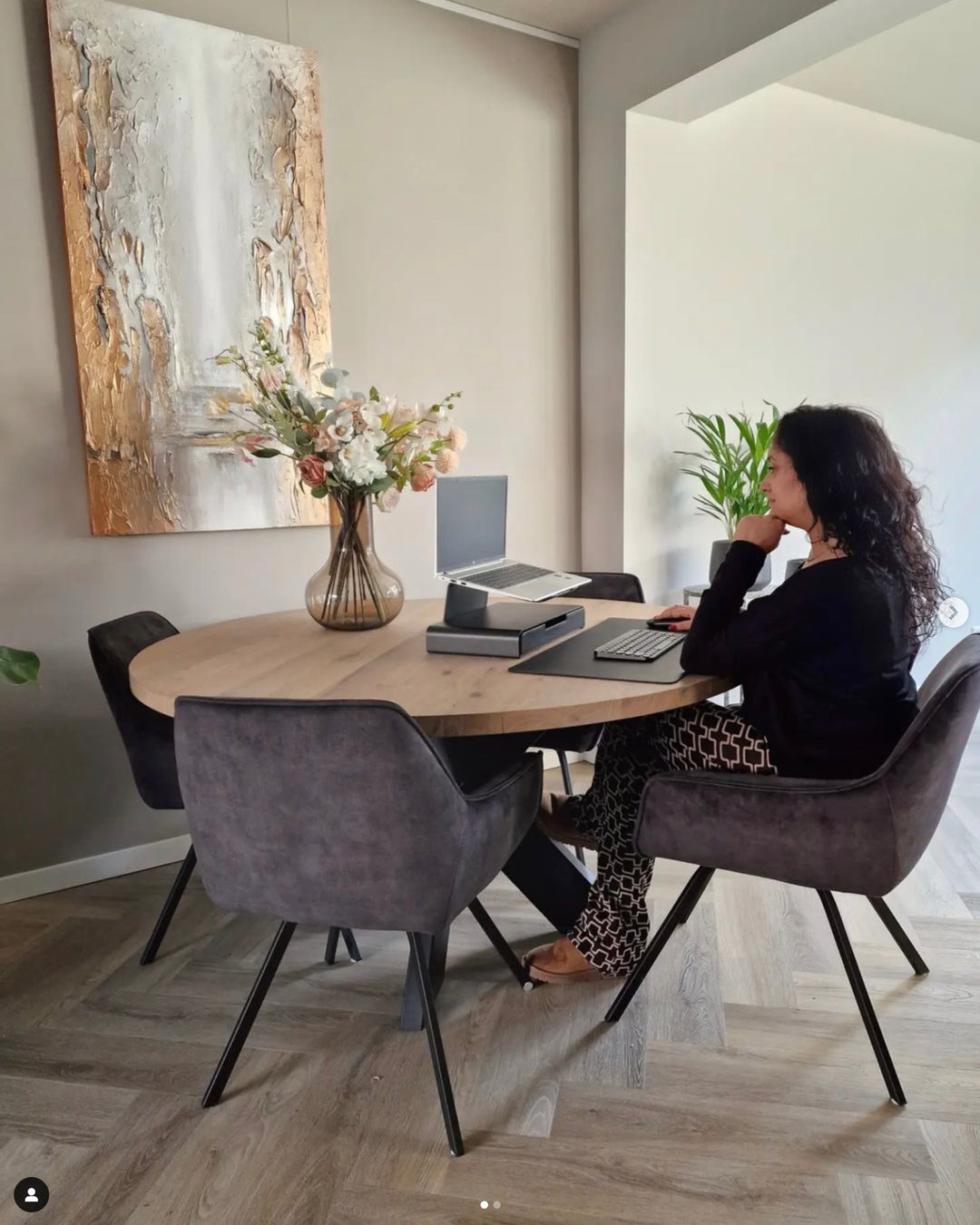Working from home can seem wonderfully comfortable, especially from the couch with your laptop on your lap. But don't be misled: a wrong posture can lead to long-term complaints. I've experienced it myself: back problems, a stiff neck, and even tingling fingers. That was the moment I decided things had to be different. The solution largely lies in improving your working posture by working at the right height. But how do you know what a good working height is for you? In this blog we provide tips and suggestions so that you can quickly improve your working posture and be more productive!
Working at the right height gives the neck and muscles rest and promotes good blood flow. You stay fit longer, feel better and you are more productive and even more creative! The height of your chair, desk and screen are essential for a healthy working posture. But how do you determine the correct height, because every person is different?
Seat height
Working at the right height starts with the basics, with the (office) chair. The seat height should be such that your feet rest flat on the floor and your knees form a 90-degree angle. If you don't have a height-adjustable chair, experiment with different cushions to find the right height. If your chair has adjustable armrests, make sure they are at the same height as the desktop. Only when the chair has been adjusted correctly do you proceed to the height adjustment of the desk.
Desktop height
Your desktop should be at a height where, when you type, your forearms are horizontal and your elbows are at approximately a 90-degree angle. When measuring, make sure that you do not raise your shoulders or allow your elbows to stick out. A desk that can be adjusted in height is perfect, but if you don't have a height-adjustable desk, don't worry! Most desks can be raised with blocks or caps under the legs. If the desktop is too high, try raising your chair a little and use a footrest or mat to keep both feet flat on the floor. It's about the right combination between desktop and chair. A flat and compact keyboard also helps to improve the working posture. This keeps your hands in a straight line with your forearm, without unnecessary pressure or tension on the wrists.
Screen height
Only when your chair, desk and keyboard have been adjusted is it important to ensure that your screen is also set to the correct height. If you work on the screen of a laptop, make sure that it is placed on a riser of at least 16 cm. This brings the screen to a comfortable height. Then determine the optimal viewing angle. You do this by slowly tilting the screen while continuing to look at the center of the screen. When the light output of the screen is at its brightest and the laptop screen is perpendicular to your field of view, the viewing angle is optimal.
If you also work with an external monitor in addition to your laptop, place it on a riser of at least 5 cm. Of course you can use a stack of magazines or a pack of printing paper, but there are also nicer solutions for this, such as the Aptiq monitor stand with storage drawer . To determine the correct height, sit upright and look at your keyboard, the height of your eyebrows is then equal to the height of the top of the screen. Another method to determine the correct height is if you look straight ahead at the screen, the top of the screen should be at eye level. This prevents your head from leaning forward and gives your neck the rest it deserves.
With these simple tips and instructions, you too can determine your ideal working height for your couple, desk and screens. Working at the right height gives the neck and muscles rest and promotes good blood flow. You stay fit longer, feel better and you are more productive and even more creative!







